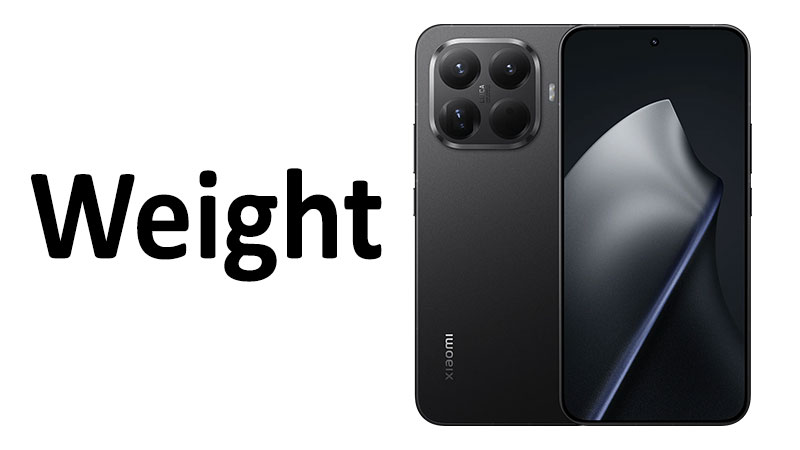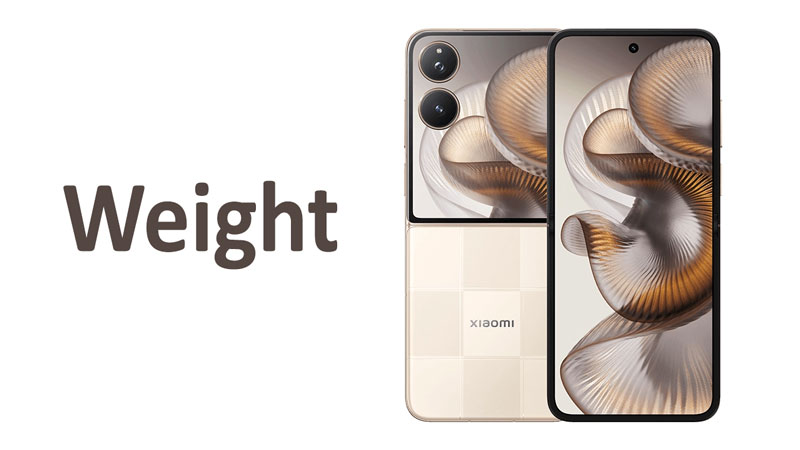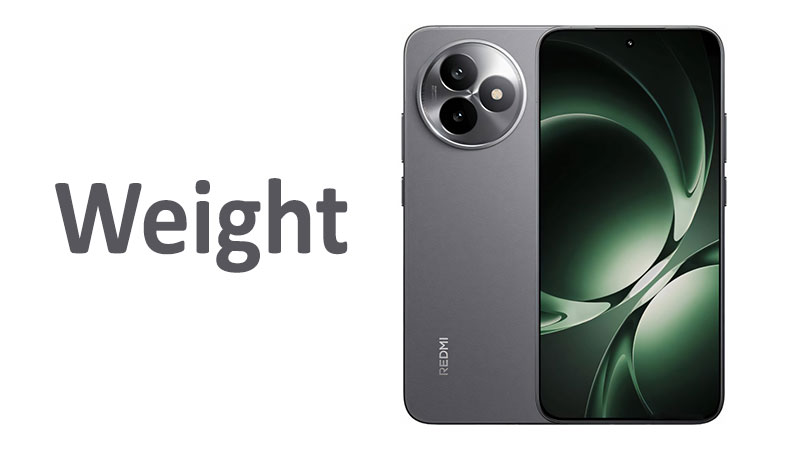The Xiaomi 15T Weight is a highly attractive feature defining its everyday usability. The phone’s mass significantly influences its in-hand comfort and long-term portability. Physical weight is closely linked to its build materials, battery choice, and component integration. This detailed article explores the Xiaomi 15T’s specific weight measurements. We will analyze the implications of its 194 grams (6.84 ounces) mass completely. Understanding this critical metric helps potential buyers. They must determine if this lightweight profile suits their mobile needs perfectly. The Xiaomi 15T delivers premium features in a notably light and comfortable package.
Detailed Weight Measurement Analysis
The specific weight of 194 g places the Xiaomi 15T firmly in the lightweight flagship category. This low mass is a deliberate engineering choice by Xiaomi. It represents a precise balance of materials and internal components. The design prioritizes ease of use over sheer internal battery capacity. High-quality materials like glass and a solid frame contribute to its total weight. This section examines the official weight in both metric and imperial units. We will also explore the immediate implications of carrying this light device daily.
The Metric Standard: 194 Grams![]()
The official weight of the Xiaomi 15T stands at exactly 194 grams. This metric measurement is the standard specification for mobile devices. For context, 194 grams is noticeably light for a modern phone with a large screen. This specific weight is well below the common 200 gram threshold for flagship devices. This signals several key internal design choices immediately. It suggests the use of lightweight battery technology or highly optimized internal components. Furthermore, it points to a careful selection of durable, light frame materials, perhaps aluminum. This mass gives the device an airy and remarkably comfortable feel in the user’s hand. This feeling strongly correlates with superior long-term comfort.
The Imperial Equivalent: 6.84 Ounces![]()
The weight is often expressed in ounces in the United States and other regions. The Xiaomi 15T translates to 6.84 ounces in total mass. This measurement helps users better understand the weight in a more familiar imperial context. A weight under 7 ounces clearly defines a phone as a light device. Many users will find this phone effortlessly lighter than their current mobile devices. The 6.84 ounces figure confirms the phone’s emphasis on user comfort. Consequently, it offers a strong advantage for daily carrying convenience.
The Purpose of the Low Mass
The relatively light 194 g mass serves several critical functional purposes. Firstly, it dramatically improves the phone’s overall single-handed usability for all tasks. Holding the device for extended periods becomes notably easier for users. Secondly, this weight makes the Xiaomi 15T highly pocketable and portable. It reduces the common discomfort often associated with larger, heavier smartphones. Thirdly, the light mass reflects Xiaomi’s engineering focus on density reduction. This means using lighter battery chemistry or a slim, optimized chassis design. Therefore, the low weight is a direct indicator of the phone’s commitment to excellent ergonomic design.
Specialized Weight Comparison: Context and Trends
Contextualizing the Xiaomi 15T’s weight requires comparing it to previous models and direct competitors. This comparison clarifies if the 194 g mass is a deliberate deviation or a standard feature. While many flagships are becoming heavier, the Xiaomi 15T bucks this trend successfully. It prioritizes user comfort over maximizing internal space for the heaviest components.
Comparison to Previous Xiaomi T-Series Models
The weight of the Xiaomi T-series models has consistently aimed for a comfortable balance. The 15T’s 194 g mass is likely maintained or slightly reduced compared to its predecessor. For example, if the Xiaomi 14T weighed 200 g, the current 6 gram reduction is meaningful. This subtle change confirms an engineering focus on component optimization and weight savings. The shift likely comes from a more efficient, lighter internal structure. This consistent lightweight focus is a key feature of the T-series lineup. It prioritizes daily handling and portability for the average user.
Comparison to Direct Flagship Competitors
The 194 g weight is extremely light compared to its large-screen rivals. Major competitors, such as the Google Pixel Pro or the large Samsung Galaxy S Ultra models, are significantly heavier. These rivals often weigh between 225 g and 240 g readily. The Xiaomi 15T offers a 30 to 40 gram weight advantage over these heavy powerhouses. This difference is immediately noticeable when holding the devices side-by-side. The Xiaomi 15T successfully sacrifices minimal battery size for superior ergonomic convenience. This lighter weight is a strong differentiator in the crowded market segment.
Comparison to Standard Flagship Models
The Xiaomi 15T competes well even against standard flagship models that are usually smaller. Many base-model flagships fall into the 180 g to 190 g range for context. The Xiaomi 15T, despite offering a large screen, is only marginally heavier than these compact options. Therefore, users get the benefit of a large display without the bulk of an ultra-heavy, premium phone. This weight profile makes the Xiaomi 15T an ideal compromise device. It perfectly blends a large display with comfortable, lightweight carrying.
Weight Distribution and In-Hand Feel
The total mass is only one part of the ergonomic equation for users. How the 194 g weight is expertly distributed throughout the chassis is the other critical factor. Excellent weight distribution makes a light phone feel even lighter and more manageable. Xiaomi engineers focus on balancing the mass perfectly. This careful balance greatly influences the phone’s perceived lightness and long-term ergonomic comfort for all users.
The Physics of Perceived Lightness
A phone with a balanced center of gravity feels exceptionally comfortable during use. If the 194 g mass is spread evenly, the device seems to float securely in the user’s palm. Xiaomi typically uses a well-integrated camera module that avoids excessive top-heavy weight. This strategic weight management improves overall grip security significantly. A well-balanced 194 g feels far superior to a light but top-heavy phone. The weight feels minimal and easy to maneuver for all tasks.
Impact on One-Handed Use
The 194 g mass is a major asset for comfortable, long-term one-handed operation. Holding 6.84 ounces for extended periods causes minimal hand or wrist fatigue. The low weight drastically reduces the risk of accidental drops during single-handed use. This light mass allows for greater flexibility in handling and easier access to screen elements. Users can comfortably navigate applications and manage quick tasks with just one hand easily. This is a crucial practical advantage over all heavier flagship rivals.
Influence of Build Materials and Structure
The 194 g weight suggests the highly efficient use of premium, low-density materials. For example, the phone likely uses a durable but light aluminum alloy frame structure. It may also feature composite materials or a thinner battery enclosure internally. These material choices allow for essential durability without the added density of stainless steel. The density of the materials is optimized to keep the phone feeling high-quality and premium. However, it still maintains the crucial lightweight specification for the user. This blend is key to achieving the 194 g target weight.
Pros and Cons of the 194 g Weight
The relatively light 194 g weight of the Xiaomi 15T brings distinct advantages and some minor disadvantages. A clear evaluation of these factors is essential for making an informed purchasing decision easily. The phone’s mass is a clear indication of its ergonomic priorities. It focuses on comfortable daily use and portability above all else.
Advantages of the Lightweight Profile
The light mass offers several key benefits to the overall user experience.
- Superior Comfort: The 194 g weight allows for effortless single-handed use and minimizes wrist strain quickly.
- Improved Portability: The mass is excellent for easy carrying and highly compatible with tight or shallow pockets.
- Reduced Drop Impact: A lighter phone gains less momentum when dropped, potentially leading to less severe damage upon impact.
- Ideal for Media: The low weight makes the phone comfortable to hold horizontally for long streaming sessions.
- Easier for Athletes: The light mass is perfect for use during physical activity like jogging or cycling.
Disadvantages of the Lightweight Profile
However, the 6.84 ounce mass also introduces some necessary trade-offs in device capability.
- Smaller Battery: The low weight often suggests a slightly smaller battery cell compared to 220 g rivals.
- Less “Premium” Feel: Some users equate heavier mass with a higher build quality, preferring a dense feel.
- Material Substitution: The weight may imply the use of more plastic or lightweight alloys instead of dense steel.
- Reduced Stability: The lower mass provides slightly less inertia for completely stable, handheld video recording.
- Perceived Fragility: The lightness can make the phone feel slightly less substantial compared to its heaviest rivals.
Buyer’s Guide: Essential Weight Considerations
A prospective buyer of the Xiaomi 15T must carefully evaluate their daily needs against its light 194 g weight. This phone is engineered for users who prioritize comfortable handling and ease of carry. Understanding the implications of its lightweight nature prevents any dissatisfaction after the initial purchase. The low weight is a defining characteristic of the device.
Assess Your Usage Patterns and Comfort Needs
First, truly consider your total daily usage time and comfort requirements. If you frequently use your phone for long periods, the 194 g mass is a major advantage. It ensures minimal hand fatigue and maximum comfort during long usage sessions. The light mass is also excellent for small hands that struggle with heavier phones. The comfortable weight is a huge selling point for media consumption in bed.
The Impact of a Protective Case
The phone’s 194 g figure represents the bare phone’s weight only. Adding a typical protective case will only slightly increase the total mass for the user. Even a rugged case may only add 20 to 30 grams at most. The total carried weight would still remain well under the 230 gram mark. This ensures the device maintains its overall lightweight character even with added protection. Factor the minimal case increase into your final decision-making process carefully.
Battery vs. Weight Trade-off
Accept the fact that the light weight suggests a focused trade-off in battery size. The phone might sacrifice a marginal amount of battery capacity to achieve the 194 g goal. However, Xiaomi compensates with extremely fast charging technology for the user. If rapid top-ups are more important than maximizing the battery size, this is a perfect trade-off. The low weight itself improves efficiency, lessening the impact of the smaller cell.
Portability and Daily Convenience
The 194 g weight is excellent for daily carrying and superior portability. This is particularly relevant if you wear light clothing or prefer using smaller handbags or purses. The light mass does not weigh down clothing or create noticeable bulk. It slips easily into a pocket without causing any discomfort during prolonged walks. The phone offers a high level of carrying convenience for the active user.
Test the Balance and Feel
Always try to handle the phone physically before making the final commitment to purchase. Focus not just on the total 194 g mass. Instead, pay close attention to how the weight is truly distributed in your hand. The in-hand feel of the Xiaomi 15T is often perceived as agile and well-engineered. This light, responsive feel is a core part of the device’s unique appeal and character.
Weight, Materials, and Component Integration
The 194 g weight is the outcome of Xiaomi’s sophisticated, weight-conscious engineering philosophy. Every internal component is carefully selected to contribute to durability and performance while minimizing overall mass. Understanding this integration explains how the phone achieves its remarkably low weight specification. The weight is a direct reflection of its ergonomic priority.
The Role of High-Strength, Low-Density Materials
The low mass strongly implies the use of advanced, high-strength but low-density materials. The frame likely employs a structural aluminum alloy that is lighter than traditional steel. The back panel might utilize a durable, light composite material or optimized, thinner glass. These material choices are critical for maintaining the phone’s structural integrity. They prevent the unnecessary accumulation of dense, heavy mass. The final design focuses on maximizing strength-to-weight ratio for users.
The Camera Module Optimization
While the Xiaomi 15T boasts a powerful camera system, the module is highly optimized for size and weight. Xiaomi engineers focus on efficient lens stacking and compact sensor placement. This prevents the large, excessive protrusion often found on heavier flagship models. The precise design ensures the camera unit adds minimal overall mass. This strategic optimization contributes significantly to the final 194 g weight target. The camera is powerful yet lightweight.
Internal Component Density
Every internal part, from the vibration motor to the cooling system, is selected for weight efficiency. The thermal management system likely uses lightweight graphite sheets and thin vapor chambers. These components manage heat effectively without adding excessive weight internally. Furthermore, the internal component layout is meticulously arranged for optimal mass distribution. This ensures the phone feels balanced and light, even during intense usage periods. The component density is a triumph of modern engineering.
Pros and Cons of the Xiaomi 15T Weight: Summary
The 194 g weight is a definitive feature for the overall user experience. This light weight makes the phone an excellent choice for casual users and those prioritizing comfort. We can summarize the key trade-offs easily. The weight enhances portability, comfort, and general usability for all tasks. However, it requires a minor trade-off in battery size compared to the absolute heaviest phones.
- Pros include: An exceptionally comfortable and airy feel in the hand for the user. It allows for effortless one-handed control during most daily activities. The low mass provides superior portability and minimizes discomfort in pockets. The weight is ideal for extended media consumption and mobile gaming sessions. This weight demonstrates a commitment to ergonomic excellence and user comfort.
- Cons include: Potential for a slightly smaller battery capacity compared to ultra-heavy rivals. Some users may prefer the “solid” or “dense” feel of a heavier, more substantial device. The lightness might offer marginally less stability during high-precision video capture tasks. The phone could feel slightly less “premium” to users accustomed to metal blocks.
Conclusion
The Xiaomi 15T Weight of 194 grams (6.84 ounces) is a conscious, highly effective design choice. This light mass is a deliberate result of prioritizing user comfort and superior handling. It confirms the use of advanced, low-density materials and internal component optimization for the user. This weight provides an immediate feeling of agility and comfort in the hand. Potential buyers should consider this low mass a major benefit for daily use and pocketability. If you are a user who prioritizes comfortable single-handed use, all-day carrying ease, and a fantastic screen, the 194 g weight is a huge advantage. It is a welcome relief from the trend of increasingly heavy flagship mobile devices. The Xiaomi 15T expertly combines high-end power with truly featherlight convenience.
Frequently Asked Questions (FAQ)
1. What is the official weight of the Xiaomi 15T in metric units?
The official weight of the Xiaomi 15T is exactly 194 grams.
2. How does the weight impact single-handed use?
The low 194 g weight significantly improves single-handed use by reducing fatigue and making the phone easier to grip.
3. Is 194 grams considered heavy for a flagship phone?
No, 194 grams is considered notably light. Many comparable flagship phones weigh over 220 grams.
4. Why did Xiaomi design the phone to be so light?
Xiaomi prioritized portability and long-term ergonomic comfort for the user in their design choices.
5. Will adding a case make the phone heavy?
A typical protective case adds minimal weight. The total mass will comfortably remain well below the heavy flagship threshold.



